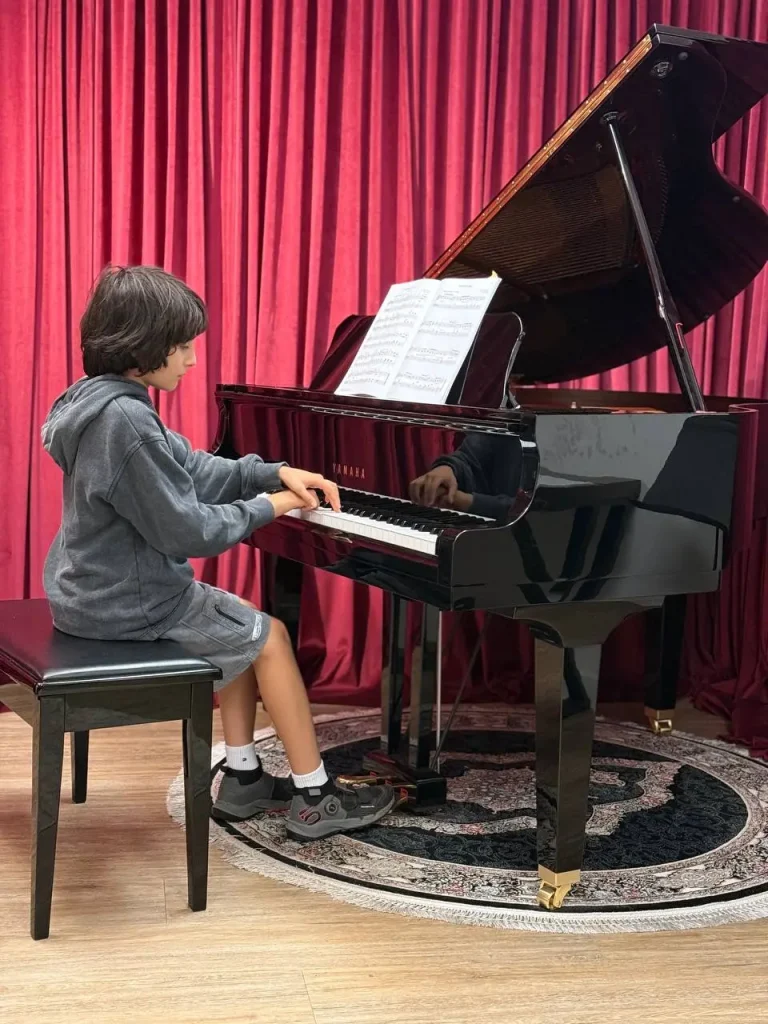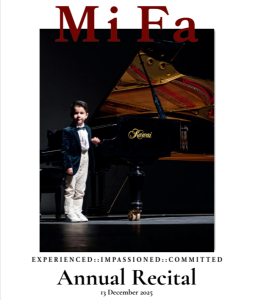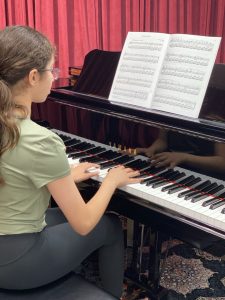How to Build an Effective Piano Practice Routine?
Creating a consistent piano practice routine is one of the most important steps toward steady progress and musical growth. Without structure, practice can feel random and frustrating—but with the right approach, every session can become more productive and enjoyable.
As a pianist and teacher, I’ve seen students at every level struggle with the same challenges: not knowing what to focus on, practicing the wrong way, or running out of time. The good news? With a structured plan, you can get better results in less time, whether you’re a beginner learning your first scales or an advanced player preparing for a concert.
In this guide, you’ll discover how to design a daily piano practice plan that works for beginners, intermediate players, and advanced musicians. You’ll also get step-by-step strategies and sample schedules for both 30-minute and 1-hour practice sessions.
Why a Piano Practice Routine Matters
A good piano practice routine is like a roadmap—it keeps you from wandering aimlessly and ensures you reach your musical goals. Without structure, students often:
- Spend too much time on pieces they already know.
- Neglect technique, which slows progress.
- Get bored or lose motivation.
With a clear structured piano practice plan, however, you will:
- See steady progress week by week.
- Balance technique, repertoire, and creativity.
- Stay motivated by measuring small wins.
If you’re in North Vancouver and want expert guidance, explore our Piano Lessons in North Vancouver at Mifa Music School, where structured practice routines are at the heart of every lesson.
Piano Practice Routine for Beginners
If you’re just starting out, the biggest challenge is building good habits from the beginning.
Common beginner struggles:
- Rushing through pieces without fixing mistakes.
- Ignoring posture and hand position.
- Practicing too little or too much without focus.
Beginner Routine Essentials:
- Warm-up (5–7 minutes) – Simple finger exercises, 5-finger patterns, or basic scales.
- Technique (5 minutes) – Hands-separately practice, focusing on smooth and relaxed playing.
- Repertoire (10–15 minutes) – Practice short pieces or exercises, hands together if possible.
- Musical Play (3–5 minutes) – Experiment with improvisation or playing a favorite tune.
Pro Tip: Beginners should focus on slow, mindful practice—speed comes later. Record short clips of your playing weekly to hear progress.
Piano Practice Routine for Intermediate Players
At this stage, students can play comfortably but need structure to advance their technique and musicianship.
Common intermediate struggles:
- Plateauing (progress feels slow).
- Playing pieces but neglecting technical drills.
- Struggling to balance school/work with practice.
Intermediate Routine Essentials:
- Warm-up (5–10 minutes) – Scales, arpeggios, Hanon exercises with a metronome.
- Technique & Etudes (10 minutes) – Czerny, Burgmüller, or Chopin studies.
- Repertoire (15–25 minutes) – Work on new sections, polish old ones, focus on musicality.
- Sight-reading / Improvisation (5 minutes) – Keeps the brain flexible and prevents stiffness.
Pro Tip: Break repertoire into small sections (4–8 bars) and master each chunk before moving on.
Piano Practice Routine for Advanced Musicians
Advanced pianists often face the challenge of time management. They already have the skill—but polishing, memorization, and performance prep require structure.
Common advanced struggles:
- Practicing for hours but with inefficiency.
- Mental fatigue or over-practicing.
- Preparing multiple pieces at once.
Advanced Routine Essentials:
- Warm-up (10 minutes) – Advanced scale variations, arpeggios, octaves.
- Technique & Etudes (15 minutes) – Liszt, Chopin, Rachmaninoff, or modern technical drills.
- Repertoire (30–45 minutes) – Alternate between new works, polishing, and performance prep.
- Musical Expression (10 minutes) – Record, analyze, and refine interpretation.
Pro Tip: Advanced players should treat practice like a performance lab—record often, practice under performance conditions, and focus on artistry as much as accuracy.
Create an Efficient Piano Practice Routine (Step-by-Step)
Here’s a universal step-by-step method you can use at any level:
- Set a Goal Before You Sit Down – “Today I will polish the left-hand of bars 9–16.”
- Warm Up Properly – Prevents stiffness and improves focus.
- Use the “3-Part Rule” – Technique, Repertoire, Creativity.
- Chunk Your Practice – Break pieces into small, achievable parts.
- End with Something Fun – Keeps motivation high.
Learn more about Owning Your Piano Practice to make every session intentional and rewarding.
Sample Schedules: 30-Minute and 1-Hour Piano Practice Routine
Here’s how to structure effective short and long sessions:
30-Minute Piano Practice Routine
- 5 min → Warm-up (scales, finger patterns)
- 5 min → Technique (etudes or exercises)
- 15 min → Repertoire (focus on one piece or section)
- 5 min → Fun play (improv, sight-reading, or review)
1-Hour Piano Practice Routine
- 10 min → Warm-up (scales, arpeggios, Hanon)
- 10 min → Technique & Etudes
- 30 min → Repertoire (split between new + review pieces)
- 10 min → Musical expression (recording, or improvisation)
Tips to Stay Consistent and Motivated in Your Piano Practice Routine
- Even with a perfect plan, the hardest part is sticking to it.
- Keep Practice Visible – Place your piano in a room you see often.
- Track Progress – Use a notebook or app to log practice goals.
- Mix Serious and Fun – Balance exercises with playing favorite pieces.
- Use Short Bursts – If an hour feels too long, split into two 30-minute sessions.
- Reward Yourself – Celebrate milestones like finishing a piece.
For more strategies, check out our guide on Piano Practice Motivation
With these routines, you now have a clear roadmap for practicing piano effectively at any level. Whether you have 30 minutes or an hour, you can use these schedules to stay structured, motivated, and consistently improving.
FAQs
Q1: How often should I practice piano to see progress?
A: It’s better to practice consistently every day (even if shorter sessions) than infrequently long sessions. Many teachers recommend daily practice at the same time to build a habit.
Q2: What do I do when I get stuck on a difficult measure or technique?
A: Break it down into the smallest possible “chunk” (often 1–2 beats or even fingers), loop it slowly, hands separately, then hands together at a reduced tempo. Bill Evans’s philosophy is often cited: “reduce whatever needs work into the smallest manageable pieces, and build it up.”
Also, rotate your focus—after an intense session on that tricky spot, switch to something fresh so your ears and mind relax.
Q3: Should I always use the metronome? Isn’t that boring?
A: While not every moment needs a metronome, it’s an extremely useful guide for rhythm, speed control, and evenness. Use it especially for scales, technical drills, and tricky passages. Some teachers suggest intentionally playing slower than you’re comfortable to build control, then gradually speeding.
If monotony sets in, alternate metronome use (e.g. every other day) or use a backing track for musical feel.
Q4: Can I practice “away from the piano” — mental practice, visualization, listening?
A: Yes. Advanced pianists frequently “practice” mentally, visualizing their fingers, hearing harmonies in the head, or analyzing score away from the keyboard. This trains musical memory, shape visualization, and mental mapping of fingerings.
Also, listening actively to recordings of your piece (or others) can tune your musical ear and interpretation sense.
Q5: Is it okay to miss a day occasionally?
A: Ideally, no—but life happens. If you miss a day, don’t panic; simply resume the next day, possibly with a lighter session. The key is not to let one missed day become a drift. Use accountability tools (like logs or checklists) to stay engaged.
Q6: I’m a beginner — why is hands-together so difficult?
A: This is extremely common. Your brain is essentially managing two independent streams of rhythms, fingering, articulations. Beginners should practice each hand separately first, at slow tempos, gradually bringing them together bit by bit.
Don’t rush hands-together; give it time and gentle persistence.
Q7: As an adult learner, am I too old to get really good?
A: No! Many adults make significant progress and derive deep satisfaction from piano. While the peak “prodigy” path is rare, musical growth and expressive skill can continue at any age.
Building an effective piano practice routine is not just about what you do, but how you organize your time, avoid distractions, and maintain consistency. Whether you’re a beginner, intermediate, or advanced pianist, the structure should include warm-up, technique, repertoire, and creative or expressive work. The sample schedules (30-minute and 1-hour) show how to adapt the same principles to different time constraints.
In your journey:
- Choose intention over habit: decide why you’re practicing each segment (e.g. fix rhythm, smooth transitions, musical phrase).
- Work smart, not just hard: small, focused chunks beat mindless repetition.
- Stay flexible and responsive: your routine can shift depending on what your music or body needs on a given day.
- Track your progress: use logs, recordings, or checklists to see how far you’ve come.
- Revisit and refine: every few weeks, reflect on what’s working or what is dragging, and adjust.





